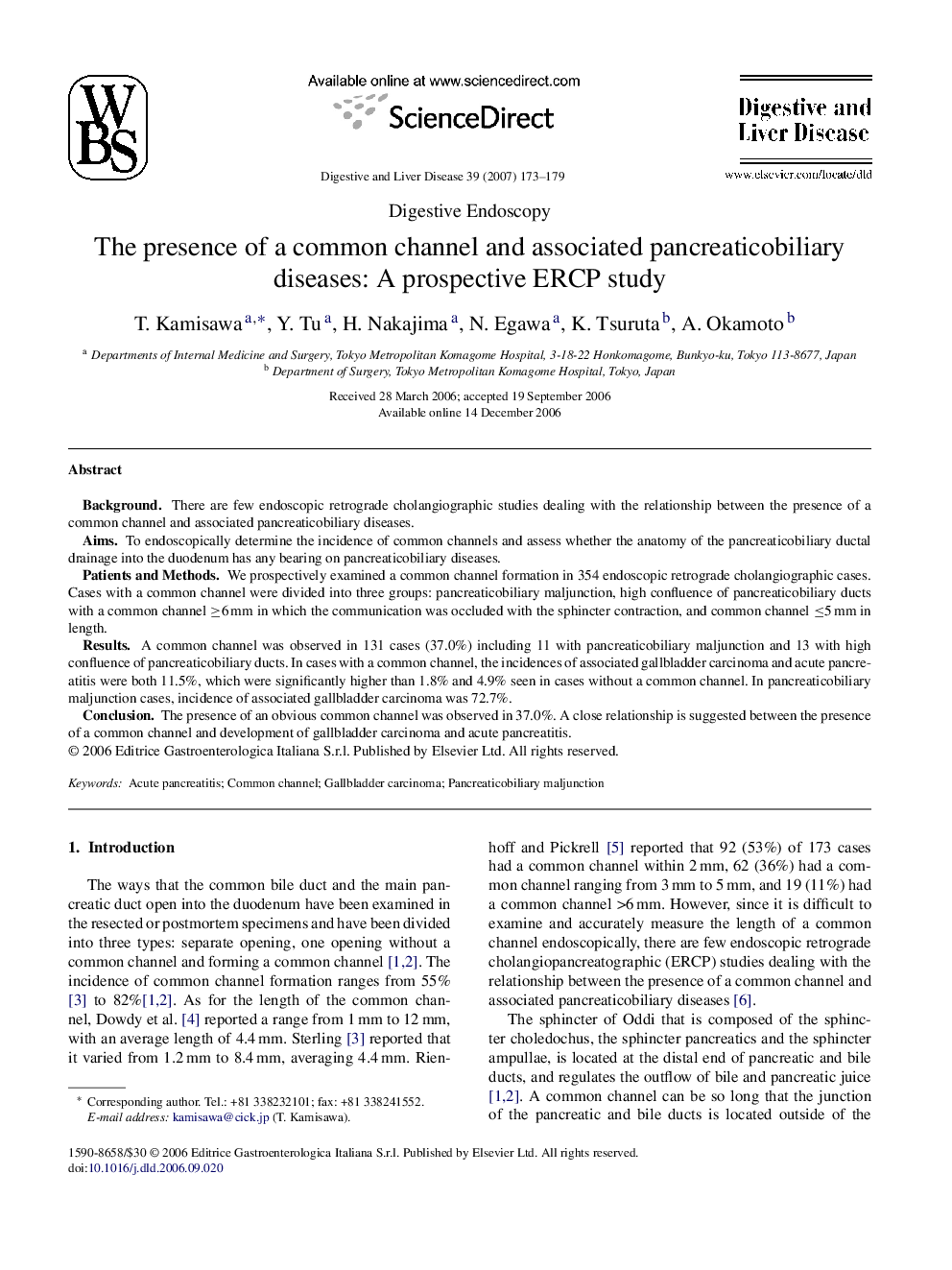| Article ID | Journal | Published Year | Pages | File Type |
|---|---|---|---|---|
| 3266573 | Digestive and Liver Disease | 2007 | 7 Pages |
BackgroundThere are few endoscopic retrograde cholangiographic studies dealing with the relationship between the presence of a common channel and associated pancreaticobiliary diseases.AimsTo endoscopically determine the incidence of common channels and assess whether the anatomy of the pancreaticobiliary ductal drainage into the duodenum has any bearing on pancreaticobiliary diseases.Patients and MethodsWe prospectively examined a common channel formation in 354 endoscopic retrograde cholangiographic cases. Cases with a common channel were divided into three groups: pancreaticobiliary maljunction, high confluence of pancreaticobiliary ducts with a common channel ≥6 mm in which the communication was occluded with the sphincter contraction, and common channel ≤5 mm in length.ResultsA common channel was observed in 131 cases (37.0%) including 11 with pancreaticobiliary maljunction and 13 with high confluence of pancreaticobiliary ducts. In cases with a common channel, the incidences of associated gallbladder carcinoma and acute pancreatitis were both 11.5%, which were significantly higher than 1.8% and 4.9% seen in cases without a common channel. In pancreaticobiliary maljunction cases, incidence of associated gallbladder carcinoma was 72.7%.ConclusionThe presence of an obvious common channel was observed in 37.0%. A close relationship is suggested between the presence of a common channel and development of gallbladder carcinoma and acute pancreatitis.
